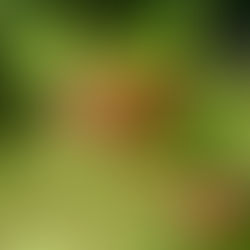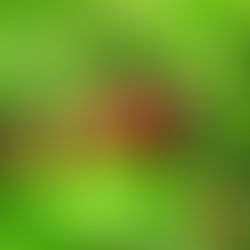
Fruit Bushes
Blackberry Bushes
Thornless Floricane and Primocane Blackberry Bushes.


Apache (Thornless)
Color & Characteristics: Large, glossy black berries; upright, thornless canes
Flavor: Sweet and juicy
Best Uses: Jams, freezing, fresh eating
Ripens: Mid to late season
Zones: 6–9
Notes: Heavy producer. Prefers full sun and well-draining soil. Space plants 3–4 feet apart for best yields.
Chester (Thornless)
Color & Characteristics: Firm, medium to large berries; vigorous thornless variety
Flavor: Mildly sweet
Best Uses: Fresh eating, preserving
Ripens: Late season
Zones: 5–9
Notes: Highly disease-resistant, especially to cane blight. Self-fertile. Full sun and well-draining soil are essential.
Prime Ark Freedom (Thornless, Primocane)
Color & Characteristics: Large, firm blackberries on thornless, erect canes
Flavor: Sweet and rich
Best Uses: Fresh eating, freezing, preserves
Ripens: Summer on primocanes, potential fall crop on floricanes
Zones: 5–9
Notes: First thornless primocane variety. Produces on new growth; ideal for colder climates. Self-pollinating. Plant 3 feet apart in full sun and well-draining soil.
Sweet Ark Ponca (Thornless)
Color & Characteristics: Small to medium berries; thornless, vigorous plants
Flavor: Exceptionally sweet, low acidity
Best Uses: Fresh eating, desserts
Ripens: Early season
Zones: 5–9
Notes: Excellent rain tolerance. High-yielding. Self-pollinating. Space 3 feet apart in full sun and well-draining soil.
Triple Crown (Thornless)
Color & Characteristics: Large, glossy black fruit; semi-erect thornless canes
Flavor: Bold, sweet-tart, very flavorful
Best Uses: Fresh eating, jams, pies
Ripens: Mid to late season
Zones: 5–9
Notes: Disease-resistant and productive. Benefits from trellising. Plant in full sun with well-draining soil.
Blackberry Varieties
Gooseberry Varieties
Black Velvet Gooseberry
Color & Characteristics: Deep purple-black berries; small to medium size; bushy growth habit
Flavor: Rich, sweet-tart with a hint of black currant
Best Uses: Fresh eating, jams, pies, preserves
Ripens: Mid to late summer
Zones: 4–8
Notes: Cold-hardy and mildew-resistant variety. Prefers full sun to partial shade and well-draining soil. Space plants about 3–5 feet apart for best air circulation and fruit production.
Hinnomaki Red Gooseberry
Color & Characteristics: Small to medium-sized berries with a deep red to maroon skin and slight fuzz; vigorous, upright bush with good resistance to disease and mildew.
Flavor: Sweet-tart with a rich, berry-like flavor; juicy and more palatable fresh than many other gooseberries.
Best Uses: Fresh eating, jams, jellies, pies, sauces, and freezing.
Ripens: Mid to late summer (typically July)
Zones: USDA Zones 3–8
Notes: Finnish variety bred for cold climates; thorny canes but worth the harvest. Requires full sun and well-drained soil. Prune yearly for best production.


Gooseberry Bushes
Grape Varieties
Grape Vines


Seedless Table Grapes
Canadice Grape (Seedless)
Color & Characteristics: Light pink to red; small, sweet slipskin fruit
Flavor: Sweet and tangy
Best Uses: Fresh eating, juice, jams
Ripens: Mid-season (varies by zone)
Zones: 5–8
Notes: Hardy, self-pollinating vine. Skin slips off easily. Bears fruit in about 2 years with full sun and well-draining soil. Space 6 feet apart.
Flame Grape (Seedless)
Color & Characteristics: Bright red; firm, medium-sized berries
Flavor: Sweet and fruity
Best Uses: Fresh eating, salads, snacks
Ripens: Early to mid-season
Zones: 7–10
Notes: Popular supermarket variety. Needs warm climate to thrive. Self-pollinating but benefits from good airflow. Space 6–8 ft apart.
Mars Blue Grape (Seedless)
Color & Characteristics: Deep blue; medium-sized slipskin clusters
Flavor: Very sweet
Best Uses: Fresh eating, juice, preserves
Ripens: July–September (varies by zone)
Zones: 5–8
Notes: Vigorous and disease-resistant. Self-pollinating. Thrives in full sun with well-draining soil. Bears fruit in about 2 years. Space 6 feet apart.
Muscadine Grapes
Carlos Muscadine Grape
Color & Characteristics: Bronze; small to medium with thick skin
Flavor: Sweet, true muscadine flavor
Best Uses: Juice, wine, fresh eating
Ripens: Mid to late season
Zones: 7–10
Notes: Self-pollinating muscadine variety. Very disease resistant. Thrives in hot, humid climates. Space 12–15 ft apart in full sun with well-draining soil.
Jumbo Muscadine Grape
Color & Characteristics: Purple-black; very large berries with tough skin
Flavor: Sweet and rich
Best Uses: Fresh eating, juice
Ripens: Late season
Zones: 7–10
Notes: Female variety needs a pollinator. Thrives in warm, humid conditions. Requires strong trellising due to heavy fruit load. Space 12–15 ft apart.
Ozark Mountain Muscadine Grape
Color & Characteristics: Blue-black; small, round slipskin grapes
Flavor: Sweet with light musky notes
Best Uses: Fresh eating, wine, jelly
Ripens: Mid to late season
Zones: 6–9
Notes: Cold-hardy, self-pollinating hybrid. Great for organic growing due to disease resistance. Full sun, well-draining soil. Space 6–8 ft apart.
Raspberry Bushes
Primocane & Everbearing


Raspberry Varieties
Anne Yellow Raspberry (Thornless, Primocane)
Color & Characteristics: Large, golden-yellow berries; thornless canes
Flavor: Sweet and mild, excellent flavor
Best Uses: Fresh eating, preserves, freezing
Ripens: August–September (June if overwintered canes are retained)
Zones: 4–8
Notes: High-yielding, very shippable berries. Requires full sun (minimum 6 hours). Space 4 feet apart for optimal air circulation and harvest ease.
Caroline Raspberry (Everbearing)
Color & Characteristics: Large red berries; vigorous, self-pollinating plant
Flavor: Rich, sweet-tart, aromatic
Best Uses: Fresh eating, baking, jam
Ripens: Summer to fall (everbearing)
Zones: 4–7
Notes: Great choice for Eastern and Midwestern regions. Thrives in full sun with well-draining soil.
Fall Gold Raspberry
Color & Characteristics: Yellow-golden berries; medium to large size; firm texture
Flavor: Sweet, mild, and honey-like
Best Uses: Fresh eating, desserts, preserves
Ripens: Everbearing — Summer and Fall crops
Zones: 4–8
Notes: Thornless primocane variety; very productive and cold-hardy. Great for backyard gardeners who want unique color and sweet flavor. Plant in full sun with well-draining soil, spaced 4 feet apart.
Joan J Raspberry (Thornless, Primocane)
Color & Characteristics: Large red berries; thornless, upright canes
Flavor: Sweet, rich flavor
Best Uses: Fresh eating, desserts, preserving
Ripens: August–September (June with overwintered primocanes)
Zones: 4–8
Notes: High yield and very easy to harvest. Great shipping quality. Needs full sun (6+ hours). Space 4 feet apart.
Niwot Black Raspberry
Color & Characteristics: Medium to large black berries; vigorous growth
Flavor: Deep, sweet flavor
Best Uses: Fresh eating, baking, canning
Ripens: Fall
Zones: 5–8
Notes: Fall-bearing black raspberry with vigorous canes. Needs full sun and well-draining soil. Space plants 4 feet apart











